
Key Points
- Watching for a False Breakdown in Spreads
- Low Volatility Over High Beta is a High Probability Path
- Bounce in Lumber/Gold but the Damage has Been Done
- Small Caps Continue to Weaken
- Growth vs Value is Taking Out the Next Resistance Level
Chart in Focus:
Was that a false breakdown in credit spreads? The BofA Merrill Lynch US High Yield CCC or Below OAS has been under pressure since March 2020. More recently, the spread undercut support at the 2014 and 2018 lows. This gave the signal that the credit market was not seeing much to worry about. Over the past few days, the spread has widened (inset chart), and the 14-day RSI has pushed to an overbought level. Should a reversal to the upside take hold, a shift to assets with the lowest perceived risk would likely be the base case for the market.
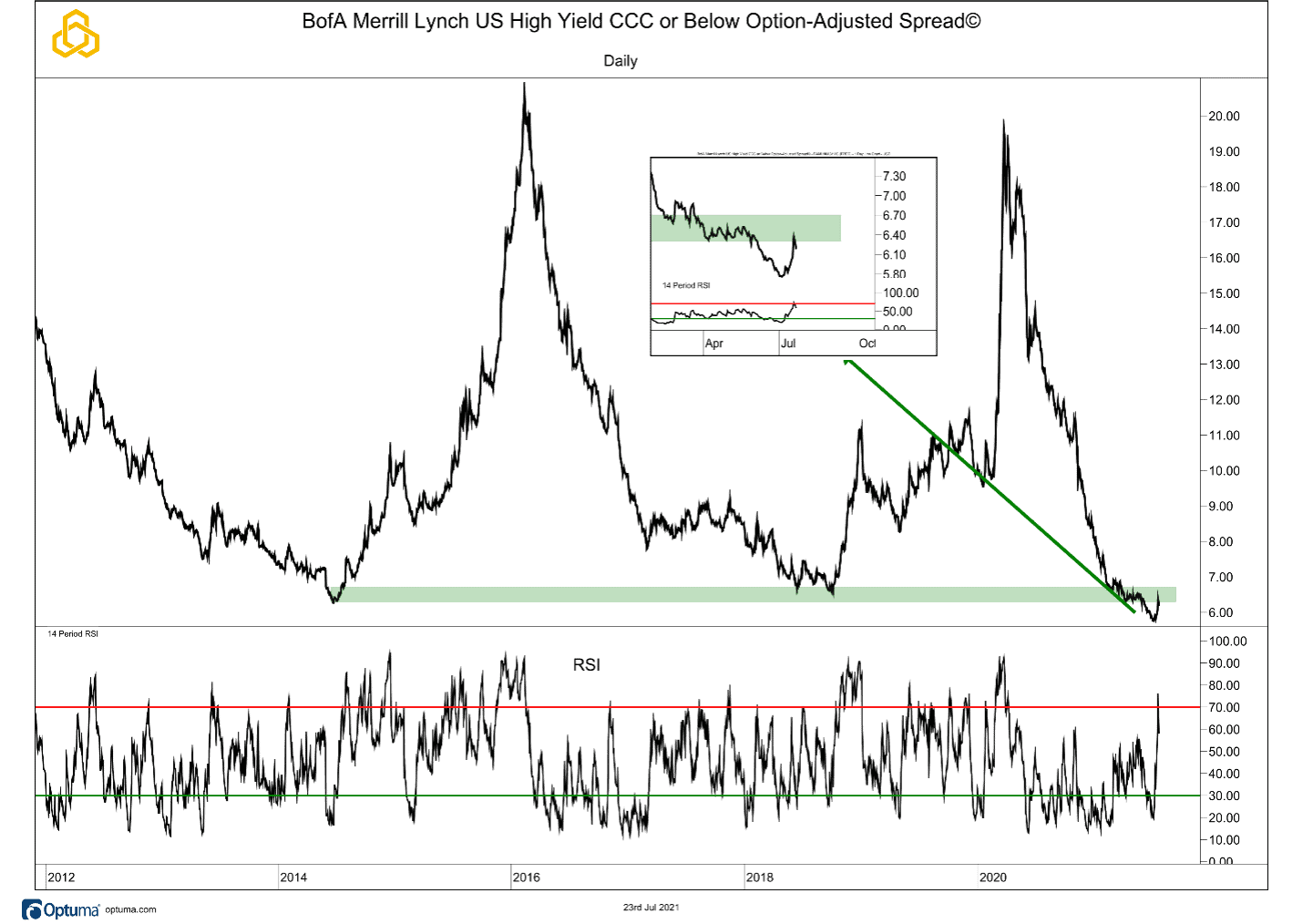
High Beta vs. Low Volatility
The ratio of the S&P 500 High Beta Index relative to the S&P 500 Low Volatility Index paid a visit to the rising 200-day moving average, used it as a springboard, and quickly retook broken support. However, in the larger sense, nothing has changed. The ratio remains in a consolidation between the 50 and 200-day moving averages while momentum appears to be shifting to a bearish regime, tilting the odds toward further weakness for the ratio.
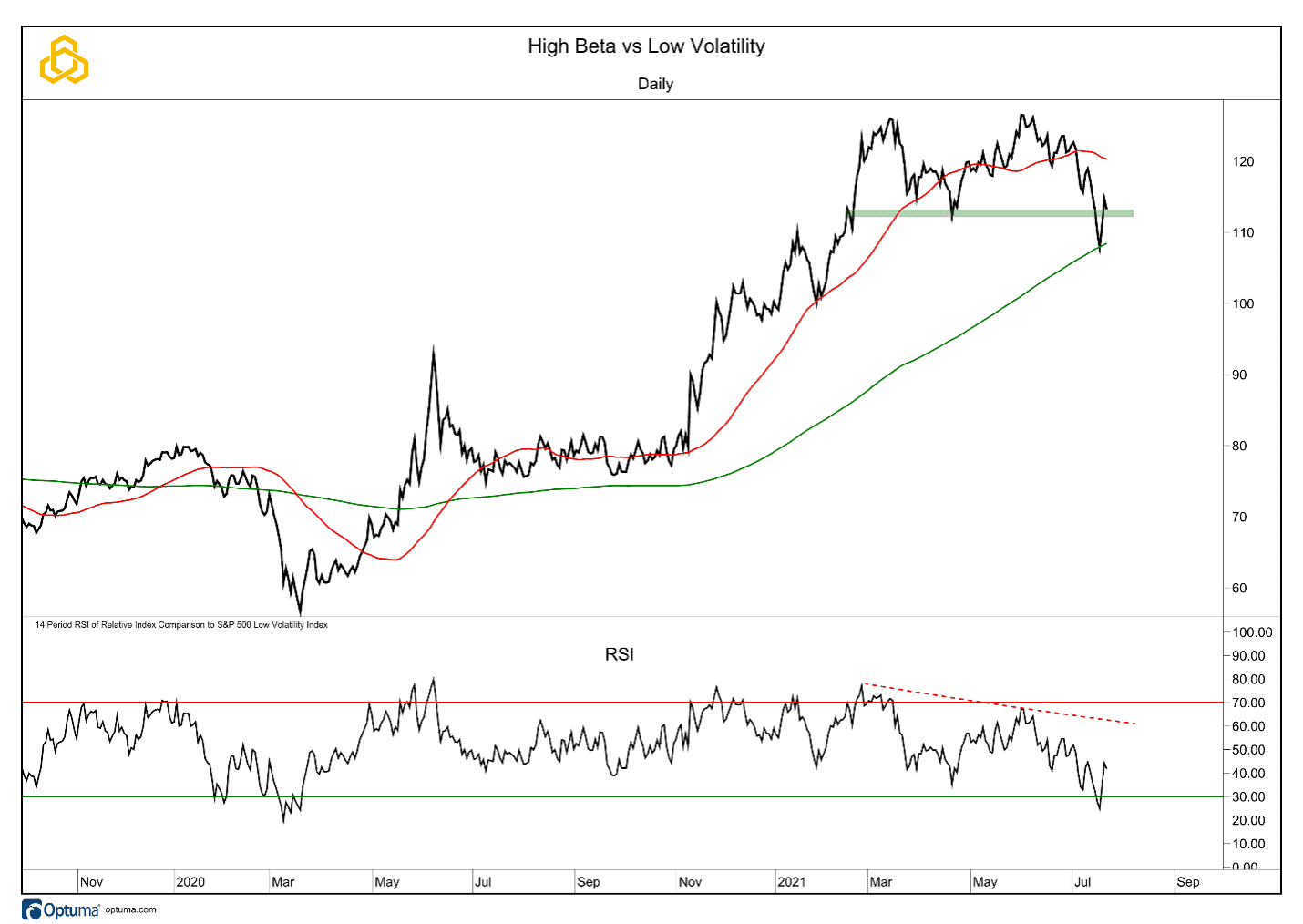
Consumer Discretionary vs. Consumer Staples (Equal Weight)
The ratio of Consumer Discretionary stocks relative to Consumer Staples stocks has once again moved to the top of the consolidation zone, support at the 2018 highs and the 50-day moving average. The 200-day moving average continues to move steadily higher and will soon enter the price-based support level. The 14-day RSI is in the middle of the range, confirming the consolidation that is playing out in the ratio.
A breakout would be a signal that investors are willing to take on more risk. A break of support would send the opposite message.
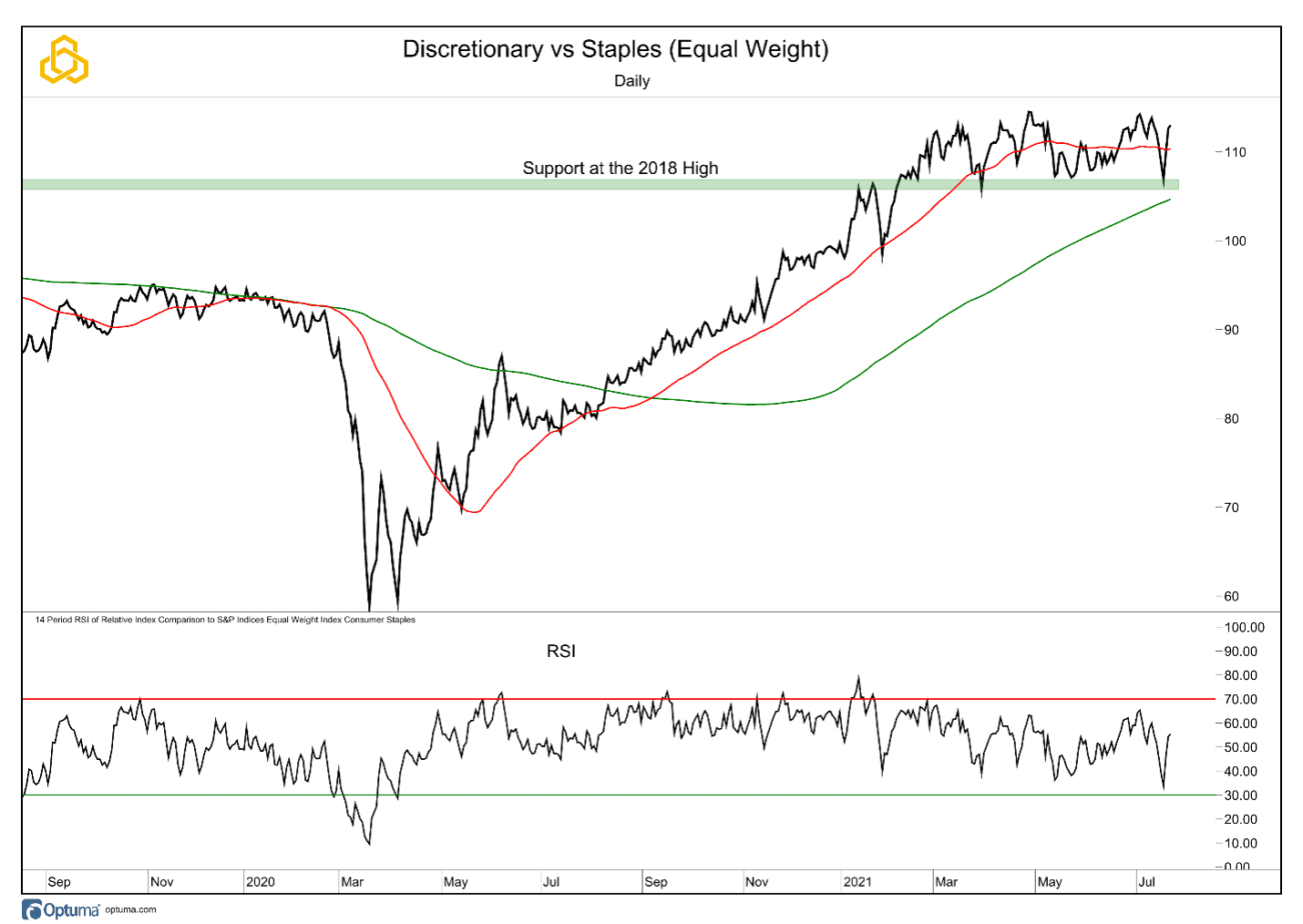
Copper vs. Gold
The Copper/Gold ratio remains in a range between the support and resistance levels that we have been highlighting for weeks. While the ratio trades below the 50-day moving average, the 14-day RSI trades in the middle of the range A break of support would signal that the trend has turned to the downside and would bring the 200-day moving average into play. In the near-term, a sloppy consolidation remains the base case.
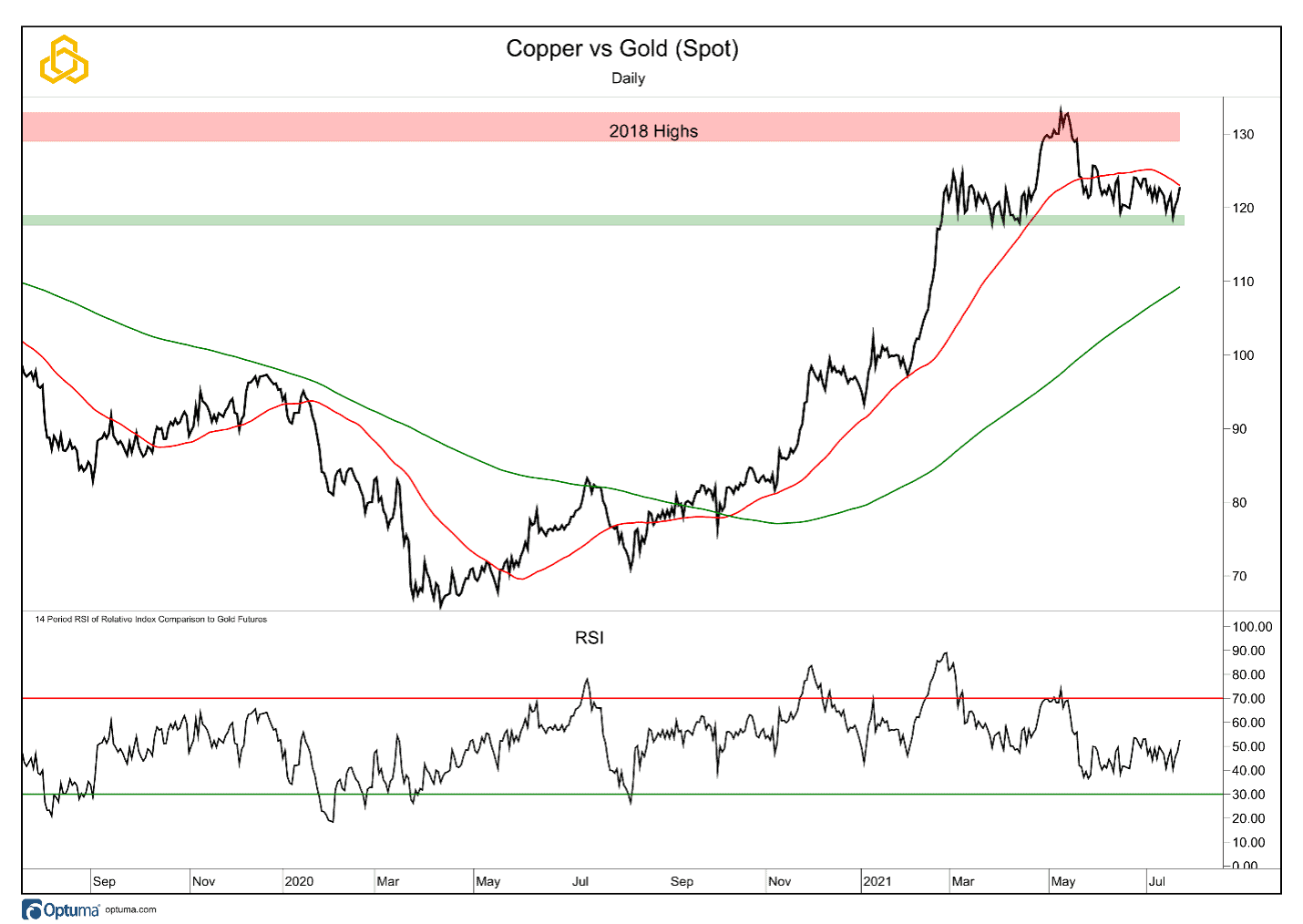
Lumber vs. Gold
The Lumber/Gold ratio has finally found a support level after a months-long nosedive that saw the ratio slice through the 200-day moving average like it wasn’t there. The 14-day RSI is also rebounding from deeply oversold levels. The key to the trend will be how the ratio responds the next time the moving average is met.

The themes below can show us where investors are allocating capital within the equity market.
Growth vs. Value
The Growth/Value ratio for the S&P 500 is in the process of breaking through another resistance level as it trades above the 50 and 200-day moving averages. The 14-day RSI sits just below overbought levels, maintaining a spot in bullish ranges. The odds favor that the highs from last summer will be tested.
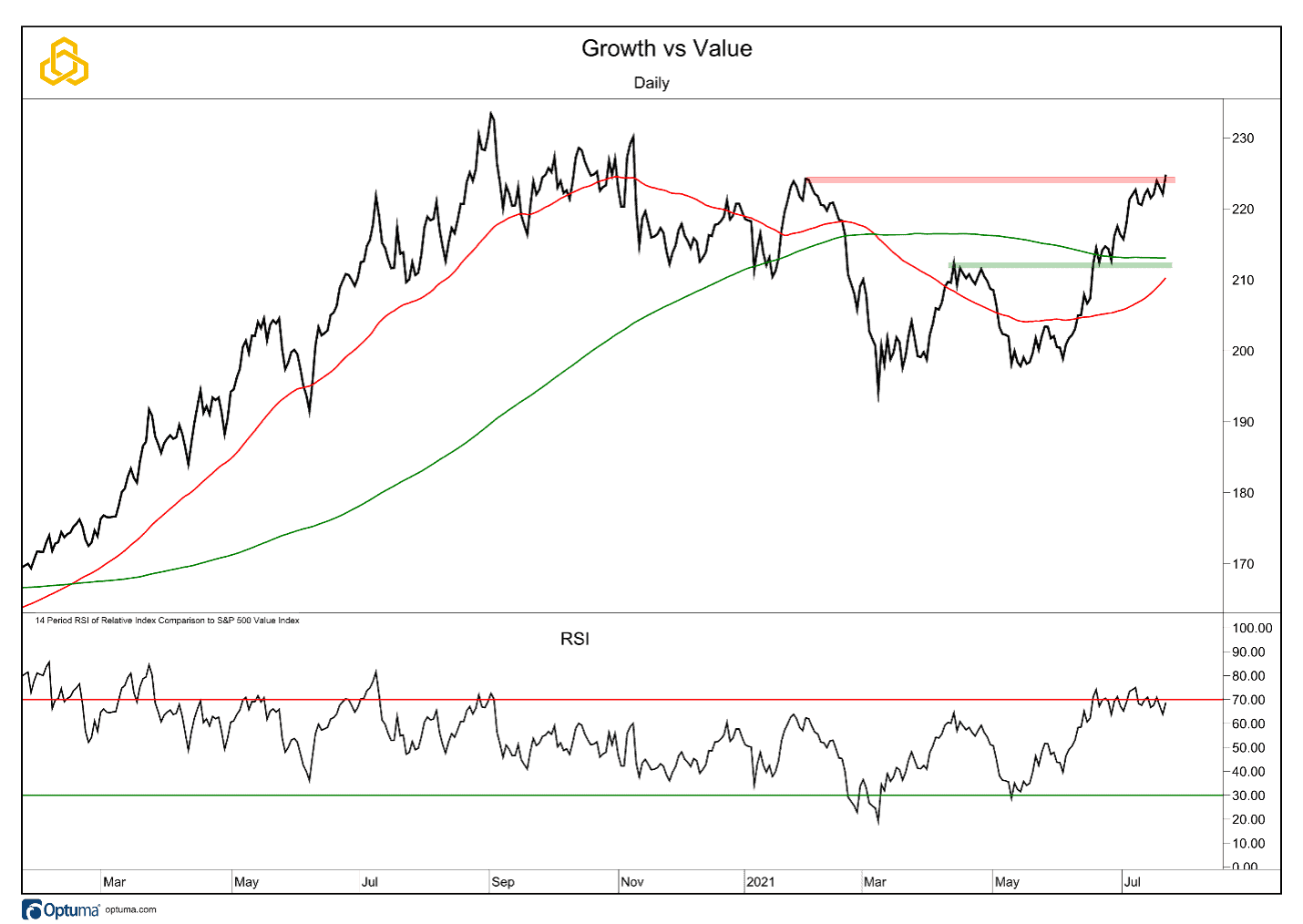
Small vs Large
The ratio of Small Caps to Large Caps remains below broken support, the 50-day moving average, and the 200-day moving average. At the same time, the 14-day RSI has shifted to a bearish regime. Odds favor a continuation of underperformance on the part of Small Caps.
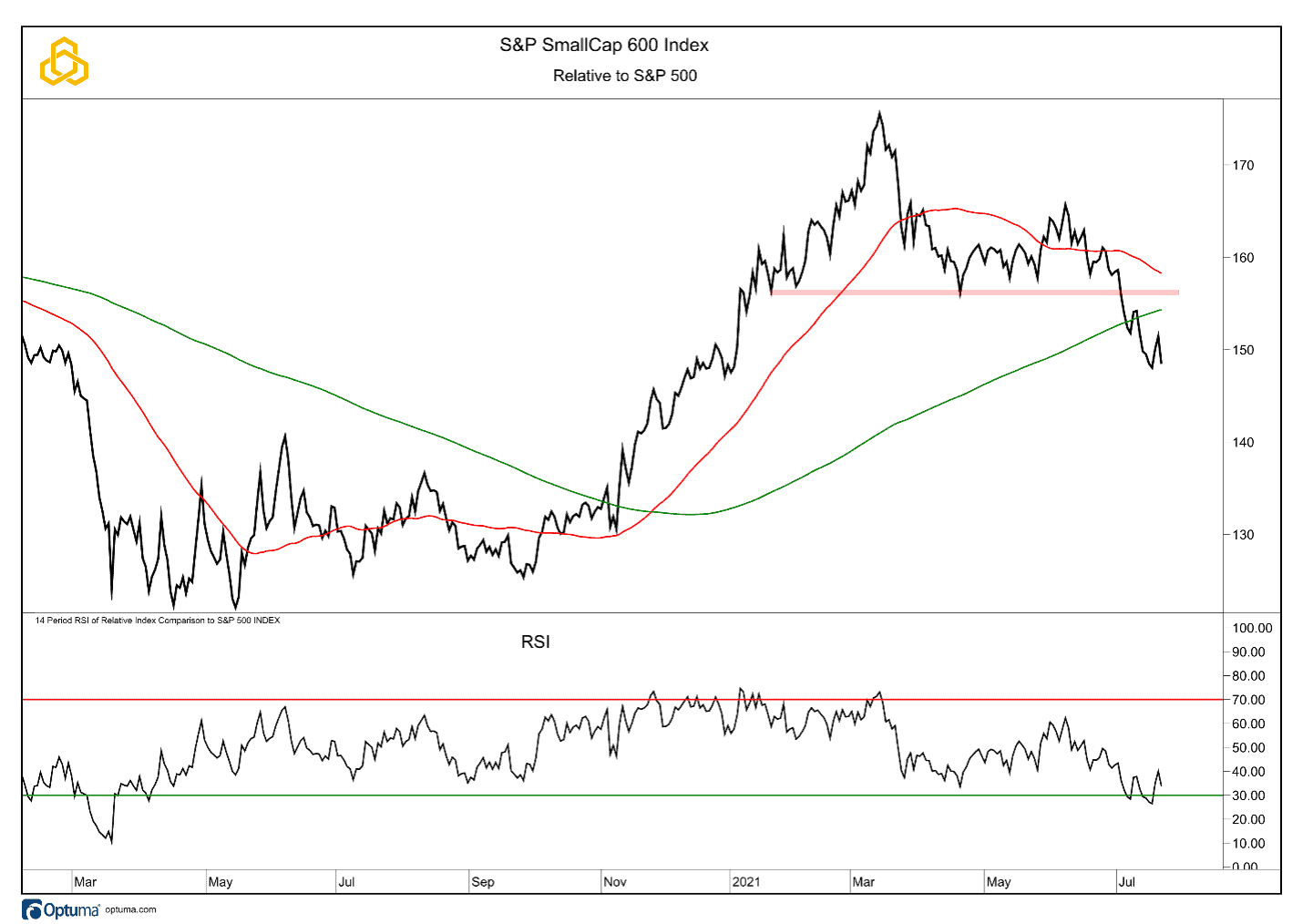
Take-Aways
After a bearish start to the week that saw investors panic and push the CNN Fear & Greed Index to a level of “extreme fear” despite the S&P 500 being less than 5% from record highs, equities have staged a rebound over the past three days. However, under the surface, there remains a lot of uncertainty as it relates to thematic leadership. People selling a macro narrative will refer to this as a “regime shift.” The problem is that it remains unclear which way the shift will transpire. However, there are some clues that point to the possibility of an environment like what was seen in 2018 and 2019 where performance was concentrated in large, U.S., growth stocks while Treasuries also performed well. Credit may be the best “tell” in the near-term.
